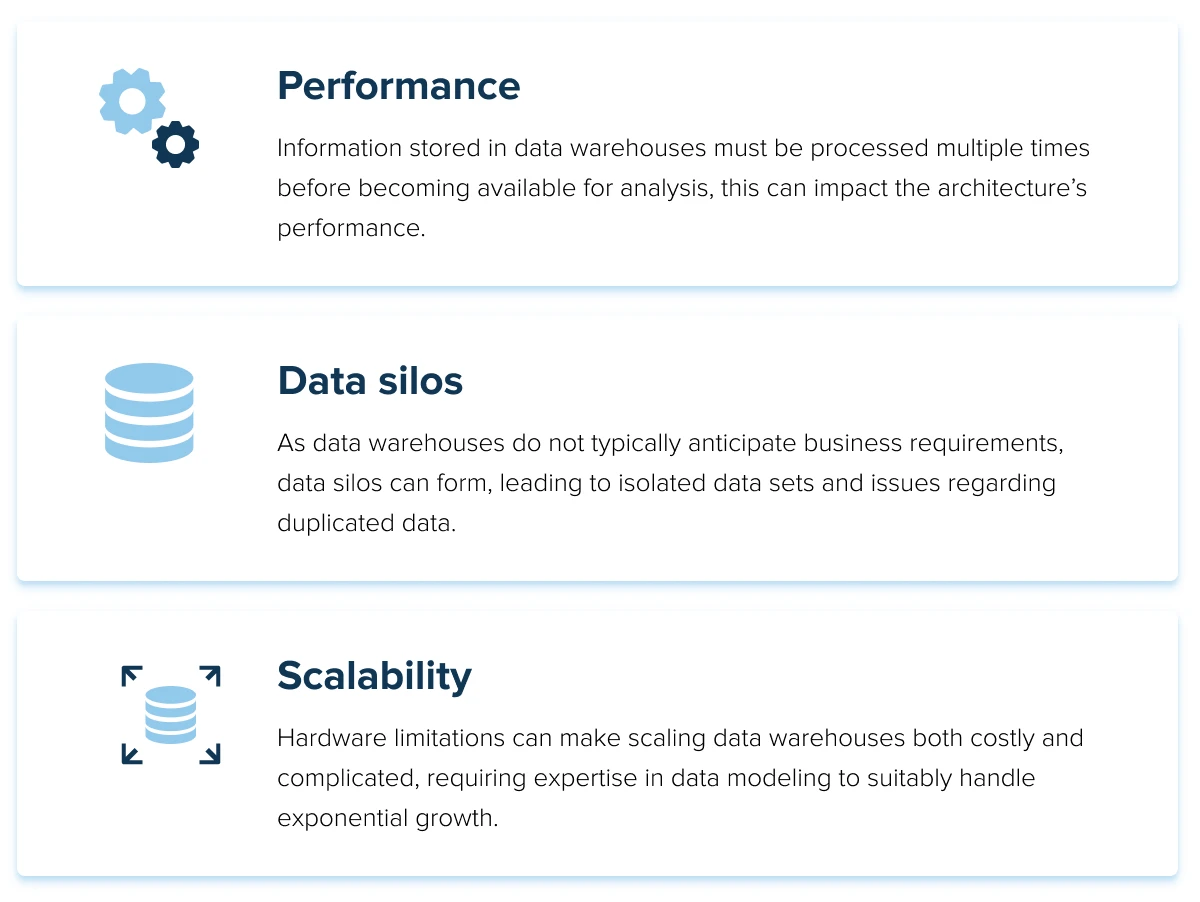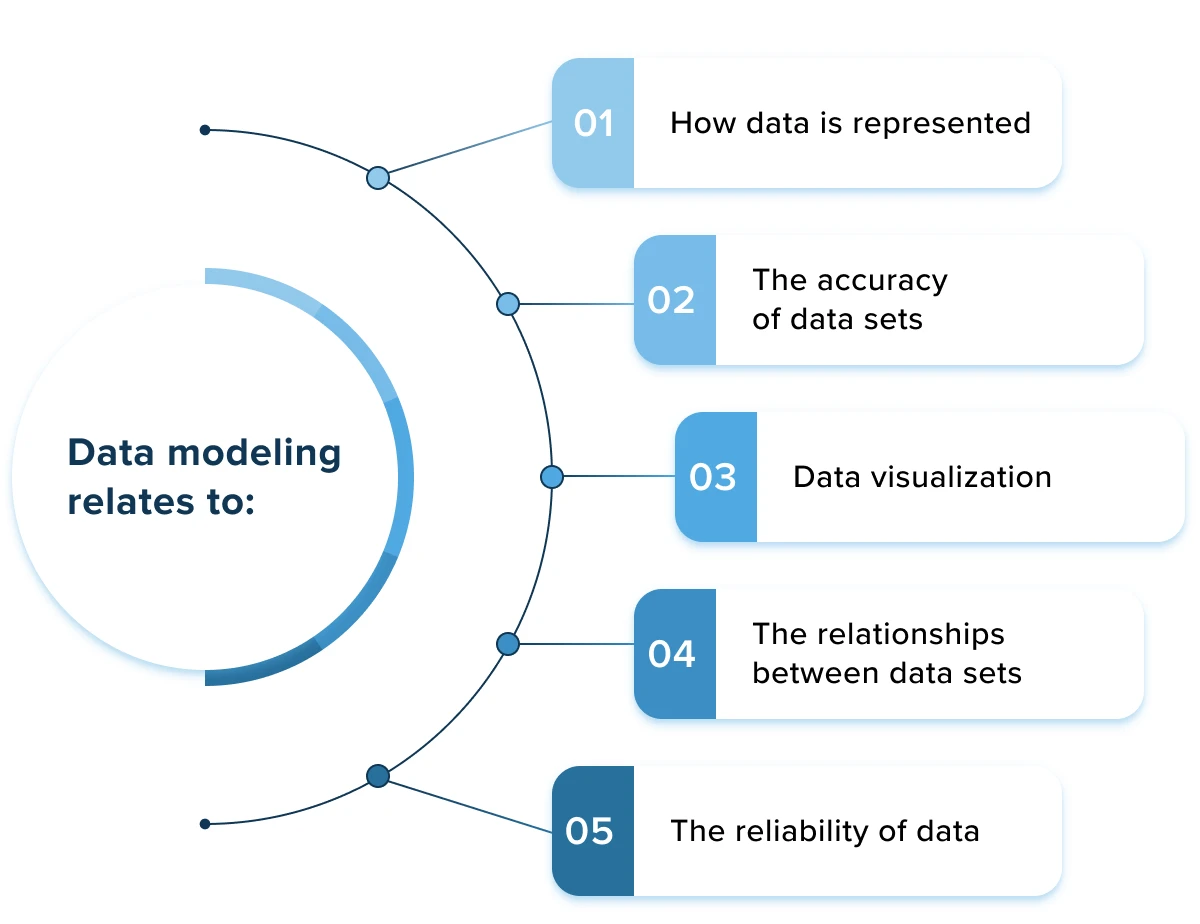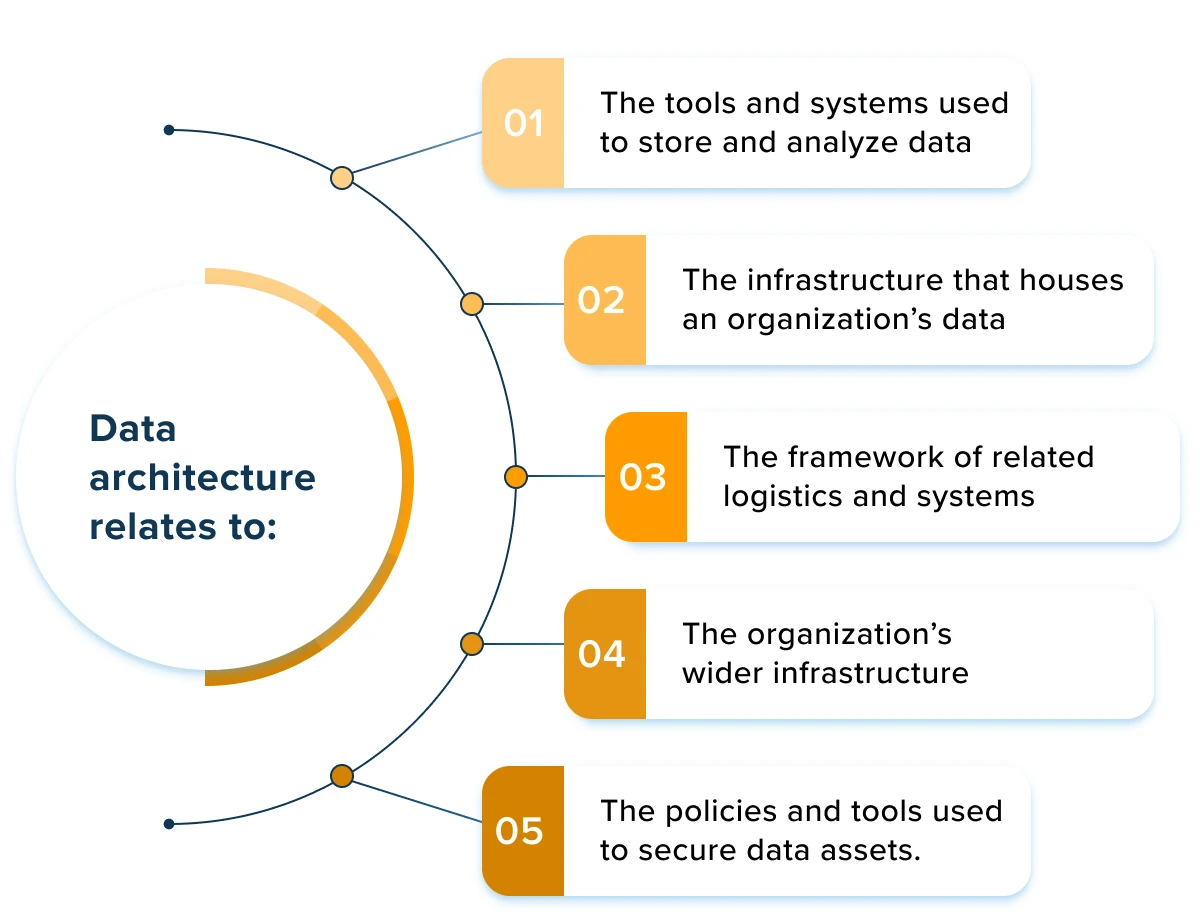Big data is central to the efficient running of all modern organizations, but to be of use, raw data must be suitably organized. The way that businesses organize data assets is commonly known as data architecture, with the benefits of modern data architecture enabling teams to respond to changing demands with improved agility when compared to older data management processes.
In layman’s terms, data architecture outlines the specific rules, policies and operational models that institutions adhere to when creating, processing and storing data for later use. Such policies also act to define which individuals have access to specific data assets, as well as how verified employees are permitted to utilize their organization’s data in a safe and appropriate manner.
With estimated figures indicating around 2.5 quintillion bytes of raw data are produced per day, modern businesses must ensure that all data processing and data accessibility processes are suitably optimized. This desire for faster and more agile data management policies is the driving force behind modern data architecture, allowing teams to unify assets across multiple platforms.
To help modern businesses create streamlined, efficient and secure data management systems, and to aid teams in understanding the key principles of modern data architecture, this article will explore how modern data architecture operates alongside the key benefits of these systems.
The evolution of modern data architecture
An organization’s data architecture is used to outline the structure in which raw data assets are stored and managed. In traditional systems, data warehouse consultants will help businesses to develop centralized platforms, with the intention to store and organize information gathered from multiple data sources in one unified database. These structures are known as data warehouses.
Though data warehouses do provide some data accessibility benefits, enabling businesses to apply data analytics processes to new and historic data, these structures can experience some limitations. As average data volumes increase, three key limitations can be exposed:

Data lakes
Modern data lake architecture was initially introduced to mitigate the issues associated with data warehouses. Though similar in design to data warehouses, data lakes are also able to manage semi-structured and unstructured data assets. This allows teams to store large volumes of data in raw formats, reducing the amount of time and resources required to process key data assets.
The major benefits of data architectures designed in this way include:
- The ability to use and analyze data from multiple sources, and of differing formats, without the need for intensive data processing
- The ability to develop focused data sets designed to meet the needs of specific departments and use cases
- The ability to work alongside AI providers to leverage machine learning and advanced data analytics to gain new insights without facing structural limitations.
Data mesh and data fabrics
Though data lakes do act to address many of the issues associated with legacy data warehouse structures, these architectures do not come without issue. Primarily, if data sets are not subject to strict standardization, inconsistencies can form within the architecture. In addition, significant integration efforts must be pursued before assets stored in data lakes can be used for analysis.
Current trends in Big data analytics suggest two emerging data architectures may be positioned to address these issues. A data mesh system is a decentralized data architecture that arranges data by associating specific assets with relevant business domains. This means chosen domain teams become accountable for their own data sets, improving the governance of data systems.
A data fabric system is an integrated data architecture designed to be more flexible, adaptive and secure than comparable systems. Data fabric architectures often rely heavily on automation and artificial intelligence used to simplify the extraction and integration of data assets. In short, the goal is to improve data accessibility for anyone in the business regardless of their skill sets.
Modern data architecture components
No matter which of the above architectures an organization chooses to develop, each resulting system will likely share similar modern data architecture components. These components define where the Big data and business intelligence central to the organization’s key operations will be stored and processed. The three main components of contemporary data architecture include:
- Physical assets – The hardware devices used for storing, processing and sharing data
- Logic structures – The policies that define how different types of data asset relate to one another
- Conceptual policies – An understanding of how relevant stakeholders and business entities relate to one another with regards to data organization and accessibility.
To illustrate how these three main components coalesce within modern Big data architecture systems, below is an example of how modern data architectures are typically structured:
- Data pipelines – A data pipeline describes how teams identify which data assets to collect, process and move, including all relevant data collection, processing, storage, analysis and sharing processes
- Cloud-based storage – Though not leveraged by all businesses, reports suggests over 60% of all corporate data is now stored in the cloud, modern cloud data architecture is prioritized by many teams to improve data accessibility and agility
- Cloud computing – Alongside cloud-based data storage systems, many modern data architectures utilize cloud computing to manage and analyze data, one example being modern data architecture on AWS accounting for 32% of the cloud infrastructure market
- Application Programming Interface (API) – APIs allow modern data architectures to optimize the collection and sharing of data assets
- AI and machine learning models – Generative AI and machine learning programs are commonly used to automate key tasks like data collection, processing and labeling, as well as assist teams in scaling data architectures in line with business growth
- Data streaming – Data streams are created to maintain a continuous flow of assets from one data source to another, allowing for real-time data analysis and processing functions.
Modern data architecture principles
Alongside key components, modern data architecture principles help teams to define how data systems are to be designed and operated. Modern data architecture consulting firms generally agree that for a system to be effective, all core components should adhere to six key principles.
Data should be viewed as a shared asset
To eliminate data silos and ensure the smooth flow of data through an organization, data must be viewed as a shared asset. This means all stakeholders and decision-makers should have a complete view of the company’s data, enabling teams to assess how customer insights relate to business functions and allowing leaders to improve the efficiency of wider operations.

Source: Unsplash
Users should have adequate access to data
Data-driven organizations cannot function if all key data assets are only stored in one location. Users must be able to access insights relevant to their roles if they’re to benefit from data as a shared asset. Therefore, modern data architectures must provide users with suitable interfaces to improve data accessibility and ensure that teams remain flexible to changing demands.
Advanced security measures should be in place
Physical and cyber security threats remain major concerns for modern businesses, with the average cost of a data breach in 2023 equalling almost $4.5 million. Modern data architectures must be reliably protected using advanced physical security systems and cybersecurity software to prevent unauthorized intruders gaining access to sensitive and valuable data assets.
Common vocabularies should be maintained
To avoid disputes regarding data analysis, and to ensure assets are appropriately organized, a common vocabulary must be implemented. Shared assets like KPI definitions, product catalogs and fiscal calendar dimensions must be uniform regardless of how the data is to be consumed.
Data should be appropriately curated
To help users navigate expansive data sets and management structures, data assets must be curated. Appropriate data curation processes will involve the cleaning of raw data, modeling clear relationships between different data sets and curating key measures and dimensions.
Data movement should be reduced
By reducing the frequency at which data is moved, organizations can mitigate issues regarding increasing costs, reduced data accuracy and time and resource waste. Data flows must be optimized for agility, with multi-workload environments such as modern data architecture on AWS allowing for the parallel processing of expansive data sets and key data assets.
Difference between data architecture & data modeling
While data modeling helps teams to focus on the more intricate details of specific data assets, providing organizations with a visual representation of how different data sets relate to each other, data architecture views assets from a higher level. Data architecture forms a foundation for how data is used and managed to help create operational policies for larger volumes of data.


The benefits and challenges of building modern data architectures
As with any large-scale organizational process, teams must equally consider both the benefits and challenges of building modern data architectures. Businesses will need to consider a wide variety of factors unique to each deployment, including scalability, how AI and automation will be utilized and how Big data development teams may create required analytics software systems.Provided business leaders, data engineers and IT professionals work closely with professional modern data architecture consulting firms to develop bespoke data management systems, teams can expect to enjoy a number of key benefits designed to optimize essential operations.
The benefits of building modern data architectures
Here are the key benefits of developing modern data architecture solutions:
Allows for a centralized approach to integration
Modern organizations are expected to both store and organize massive volumes of data, with information from various data sources often siphoned into numerous storage systems. One of the major benefits of data architecture is the ability for teams to develop a centralized view of these assets, meaning data from the entire organization can be managed within one platform.
Improves the scalability of data systems
Modern data architectures and data lakes designed to store large volumes of data are easily scalable, with data engineers able to add storage nodes and leverage additional cloud-based resources as and when needed. This means existing data storage and access policies remain functional as the infrastructure supporting stored assets expands to accommodate new data.

Source: Unsplash
Minimizes latency in hybrid environments
Latency increases each time data is duplicated, quickly creating issues within organizations that store data in multiple separate locations. Modern data architecture ensures that data assets are always available across the entire organization, meaning users across different departments will always have access to necessary information in real-time for improved efficiency and flexibility.
Enhances analytics and visualization processes
While capturing and storing data can be achieved even when utilizing legacy data architectures, modern data architectures provide businesses with additional insights. Teams can monitor data as it travels throughout wider systems, analyze how key data assets are used and visualize any potential barriers that may be affecting the efficacy and efficiency of data-dependent processes.
Increases data storage capabilities
Research suggests the average business requires as much as 7.5 petabytes of storage space for unstructured data, with large enterprises requiring up to 17.5 petabytes. Most legacy data storage systems will struggle to handle this volume of data, though modern data architectures can easily process, store and analyze massive amounts of data with little to no restrictions.
The challenges of building modern data architectures
Here are the challenges you may face when creating modern data architecture:
Maintaining data quality
Though the technology governing modern data architectures is more than capable of storing and analyzing large quantities of complex data, these systems will only be effective if they’re configured intelligently. Considered processes must be in place to analyze the quality of data moving throughout key systems, as poor quality data will typically lead to inadequate results.
Mitigating complexities
Finished and functional modern data architectures are designed to simplify workloads and essential processes via improved accessibility through unified interfaces, however, to achieve this the underlying architecture is often particularly complicated. Business leaders must work closely with data engineers and Big data developers to create and maintain effective systems.
Meeting business goals
Internal technology experts and business leaders must be aligned in their goals when it comes to the development of modern data architectures. Each element must be designed to support the other, meaning companies must pursue leaders who prioritize both tech and business goals.

Source: Unsplash
Refining data strategies
A well-designed modern data architecture alone will not be enough to ensure business success. IT professionals and data engineers must have an operational understanding of both business and data requirements to form effective data strategies capable of producing beneficial results.
Summary
To succeed in competitive markets and ensure all essential operations are performed smoothly and efficiently, modern businesses must collect and analyze massive quantities of data. While legacy data architectures and management systems may be serviceable in some cases, most scaling businesses will quickly realize that building upon older structures can be challenging.
By developing contemporary solutions designed to function within hybrid environments, teams can improve data accessibility and ensure businesses remain flexible to changing demands. The benefits of modern data architecture include increased storage capacity for both structured and raw data assets, reduced latency with regards to analytics processes and simple scalability to support business growth, helping organizations to optimize and future-proof wider operations.
Improve decision making with Big data engineering
Looking for a trusted data engineering company? Contact us, and we’ll reach out to you to discuss your project ideas.



